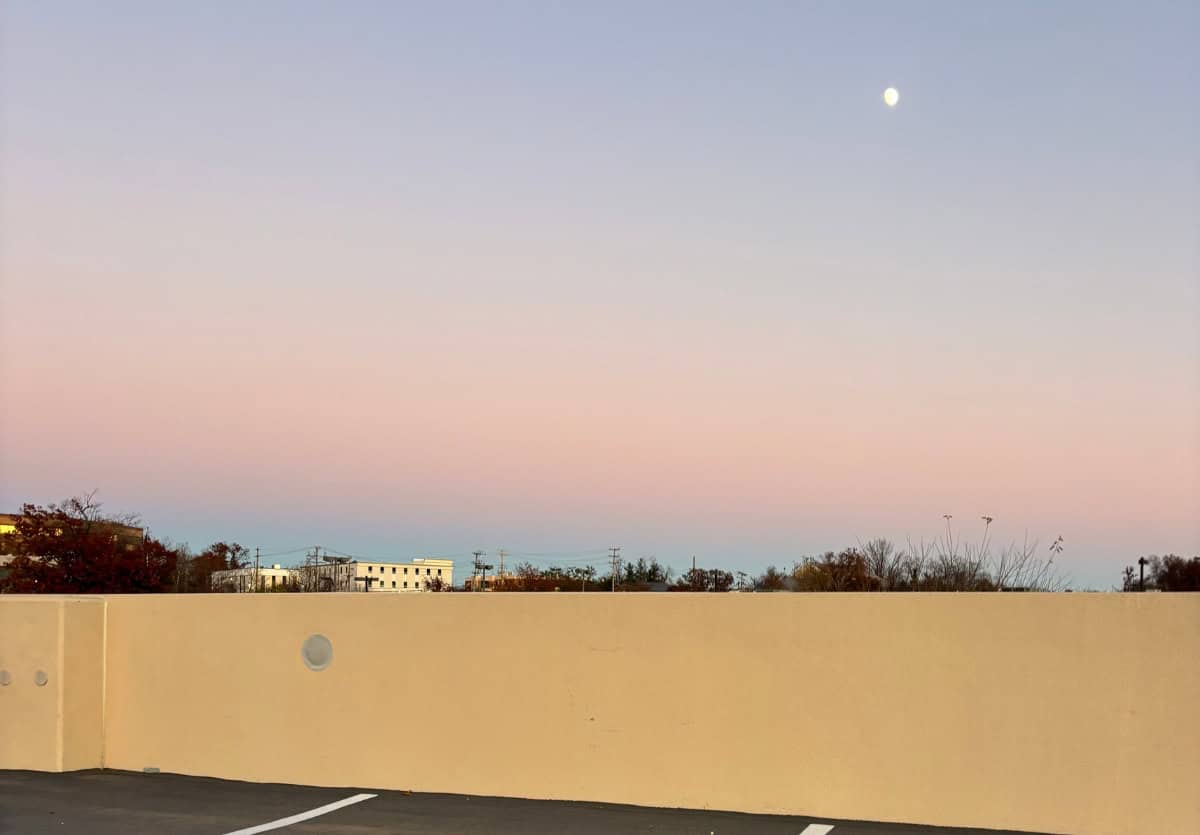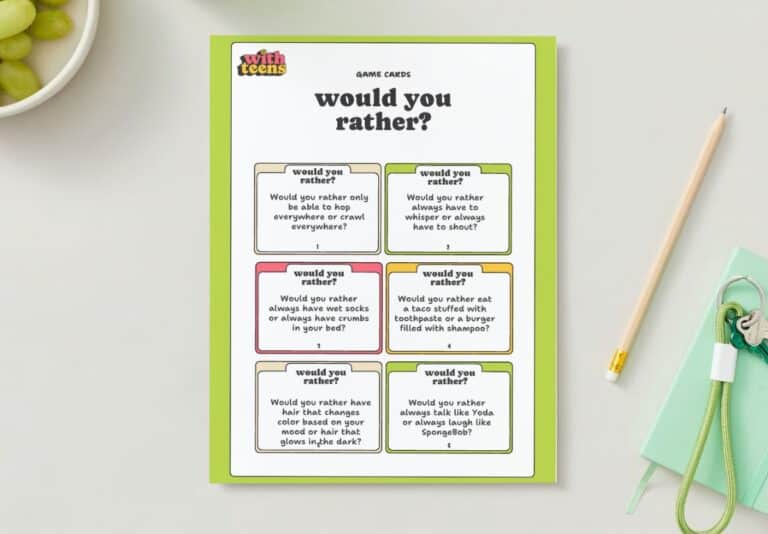
Seeing beauty in everything isn’t always easy, but it’s a skill that can change how we experience the world. Last night, just as we pulled into the Trader Joe’s parking lot, my teen stopped me in my tracks.
“Wait, Mom!” she called out, jumping out of the car and bounding across the cement to capture a picture of the moon rising.
It wasn’t some famous view—just the moon glowing over a grocery store. But in that moment, it felt like magic.
“There’s beauty everywhere,” she said, her eyes wide with wonder. “I’ve seen waterfalls with rainbows in Iceland… but there’s beauty right here, too.”
That moment got me thinking: How often do we miss the beauty in everyday life? And could teaching ourselves—and our teens—to see beauty in everything really be the key to happiness?
The answer is yes. Research shows that learning to see beauty in everything can boost gratitude, reduce stress, and increase overall happiness. And the good news? It’s a skill anyone can learn.
What Does It Mean to See Beauty in Everything?
Seeing beauty in everything means taking time to notice and appreciate the small, everyday moments that often go unnoticed. It’s about finding joy in the simple things—a kind smile, a blooming flower, or the warmth of sunlight through your window. When we learn to recognize these moments, we create more opportunities for gratitude, mindfulness, and happiness.
Seeing Beauty in Everything: 8 Ways To Transform Your Perspective
Seeing beauty in everything isn’t just a skill—it’s a mindset that can bring more joy and gratitude into your life. Whether you’re walking through nature or sitting in traffic, these simple practices can help you and your teen uncover the magic hidden in everyday moments. Here’s how to get started:
1. Slow Down and Look Closely
In our fast-paced lives, beauty often goes unnoticed. Slowing down, even for a few moments, can make all the difference. Encourage yourself (and your teen) to take a mindful pause each day. Whether it’s during a walk, in line at the store, or even just staring out the window—take a moment to look around. Notice the patterns, colors, or small details that might otherwise blend into the background.
Pro Tip: Try making it a game—find five beautiful things on a walk around the block or from the window. It’s surprising how much beauty is hiding in plain sight when we slow down and look for it.
2. Try the “9 Beautiful Things” Practice
This exercise, developed by psychologist René T. Proyer, is a simple but powerful way to start seeing beauty all around you. Each day, try noticing nine beautiful things in three categories:
- Three moments of human kindness (a smile, a kind gesture, a good deed).
- Three things in nature (a blooming flower, a sunrise, the sound of rain).
- Three general beautiful things (art, music, a lovely piece of architecture).
This practice was highlighted on the Science of Happiness Podcast, where restorative justice advocate Darnell Washington reflected on how the exercise helped him uncover beauty in both the extraordinary and the everyday. He found joy in moments like a heartfelt hug, a peaceful stream, and even squirrels posing for a photo!
Encourage your teen to join you, and at the end of the day, share what you each noticed. This can spark great conversations and help you both end the day on a positive note.
3. Embrace Small Wonders
While we often look for “wow” moments, beauty can be tiny and unassuming. Think of the curl of steam from a hot cup of tea, the sound of leaves rustling, or the way light filters through a window. These small wonders, though subtle, are powerful reminders of the beauty that exists in our everyday lives.
Practice Idea: Each evening, reflect on one small, beautiful thing you noticed that day. It could be as simple as the laughter you heard, the scent of dinner cooking, or a kind gesture from someone. The more you recognize these small moments, the more they start to add up.
4. Capture It Through Your Own Lens
A great way to train yourself to find beauty is to start capturing it. Try photography or even just snapping photos on your phone. By focusing your lens on little details—a street corner, a flower, your coffee cup—you’re training your mind to notice the beautiful and unexpected details around you.
Activity: Create a “beauty journal” with your teen. Every day, snap a picture or jot down something you found beautiful. Not only does this help you see beauty more, but it’s also fun to look back and remember those moments.
5. Encourage a Sense of Wonder
Kids and teens are often better at seeing beauty in unexpected places. Encourage this by asking questions that spark curiosity: What’s the most interesting thing you saw today? What’s one thing that surprised you? These questions open up a conversation about the beauty they’re discovering and make it feel like a fun, ongoing adventure.
For Parents: Let your teen lead you. Sometimes, they’ll notice things we adults overlook. When they point out something beautiful, pause with them, look, and appreciate it together. Their sense of wonder can inspire you, too.
6. Create a Routine of Gratitude
Gratitude is deeply tied to noticing beauty. By practicing gratitude, you’re training yourself to see life’s positives, even when things feel mundane. Each morning or evening, try listing three things you’re grateful for. Over time, this routine can help shift your focus to what’s good, beautiful, and worth appreciating.
Tip: If your teen isn’t into gratitude journaling, try a simple check-in: What’s one thing that made you smile today? It’s a subtle way to build the habit of noticing positives.
7. Let Go of Expectations
When we search for beauty, we often look for the “picture-perfect” moments and miss the imperfect ones. But beauty can be messy, surprising, and completely unplanned. Let go of your expectations of where you think beauty “should” be and instead, let yourself be open to discovering it where you’d least expect.
Practice: The next time you feel stressed, try looking around to find a beautiful detail in your surroundings. Maybe it’s the way light hits a wall, or a colorful mural you hadn’t noticed. These moments remind us that beauty doesn’t have to be perfect to be meaningful.
8. Remember That Beauty is a Choice
In the end, seeing beauty in everything is a choice—a choice to focus on what’s good, on what’s uplifting. It doesn’t mean ignoring life’s difficulties, but rather making a conscious effort to find balance by noticing the things that bring joy. And it’s a skill that you and your teen can carry with you wherever you go, even when life feels overwhelming.
The Wrap-Up: Seeing Beauty in Everything is Everything
So next time you’re out and about, remember the Trader Joe’s moonrise moment. Seeing beauty in everything reminds us that joy and meaning can be found all around, even in the most ordinary places.
Finding beauty in everything isn’t just about noticing what’s there—it’s about cultivating a mindset of gratitude and joy, one moment at a time.
Let it be your key to happiness.






